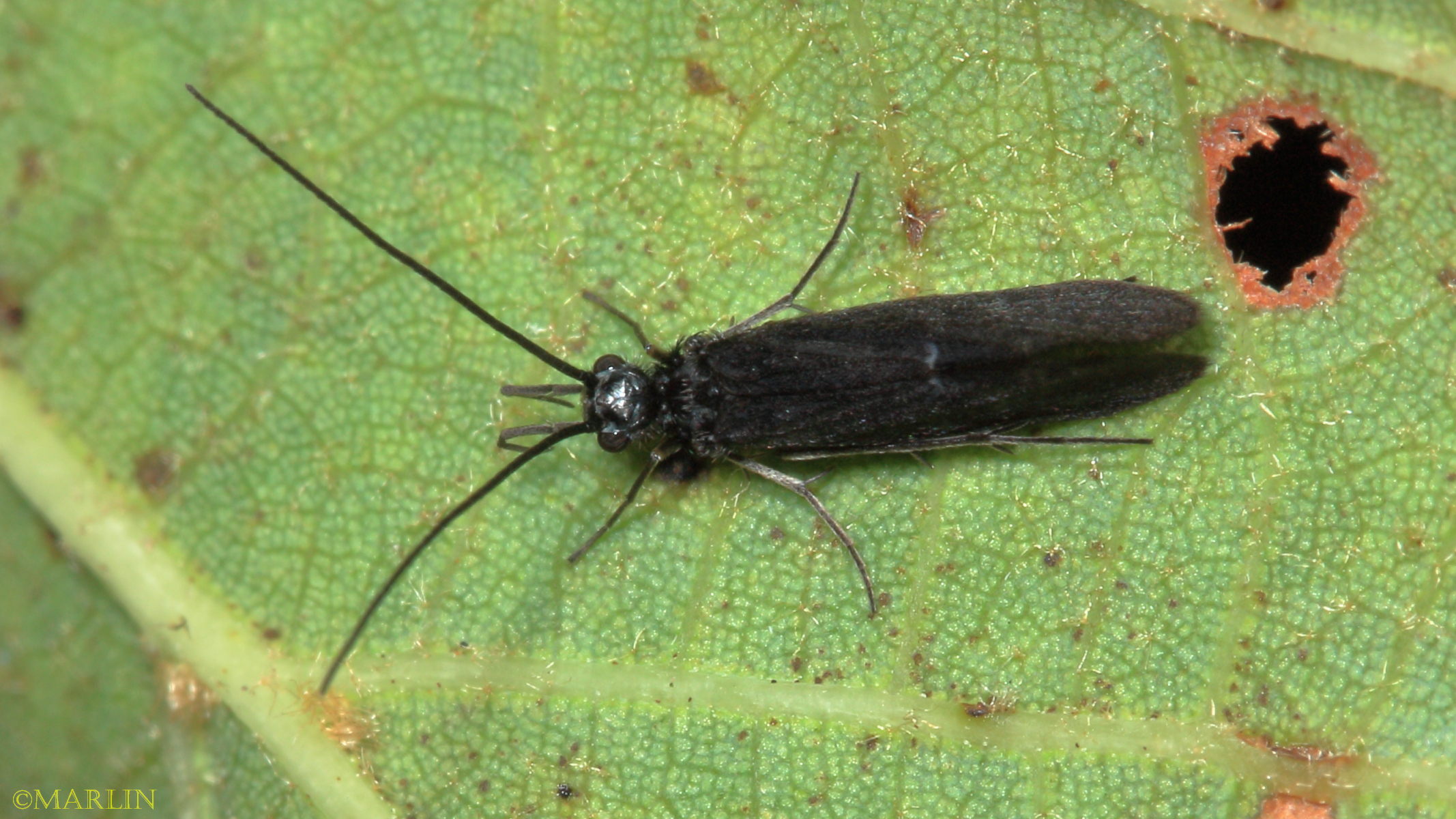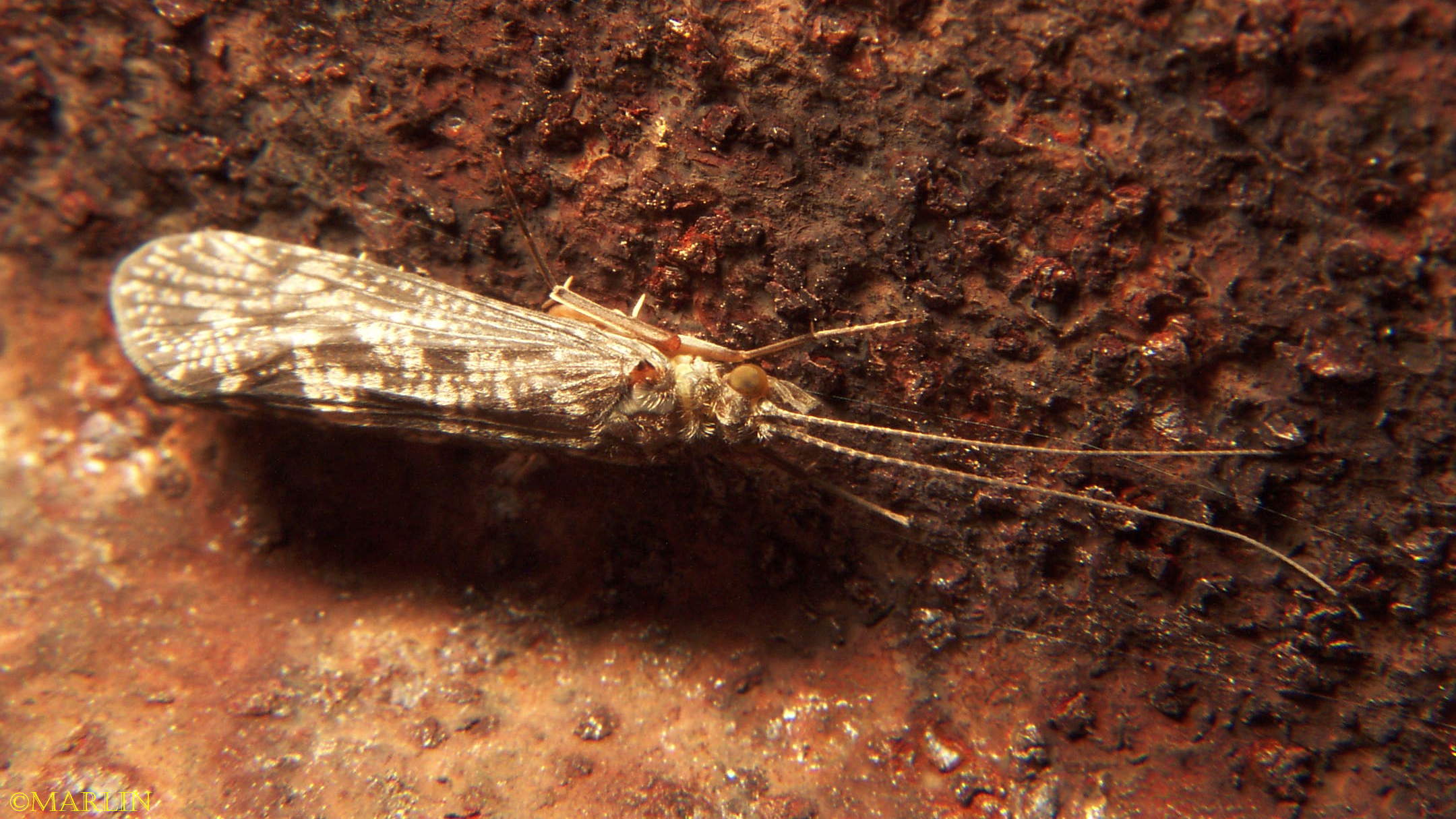Caddisfly – Order Trichoptera
Very common “little black caddis” in the genus Chimarra. Science Lake, Allegany State Park, New York.
Caddisfly adults resemble moths, but the wings are covered with fine hair instead of scales. (Trichoptera = “hair wing.”) Caddisfly larvae are a favorite food of many fish, including trout, and are used as bait by sport fishermen. The larvae are especially sensitive to water pollution and their numbers can be monitored over a period of time as a good indicator of water quality.
Adult caddisflies are commonly called sedges. Caddisflies (and mayflies) frquently hatch en masse, providing swarms of flying insects that attract sport fish, especially trout. Fishermen take advantage of these hatches by fly-casting both wet and dry flies mimicking these insects.
These primitive flying insects are most abundant near well-aerated streams and fast-flowing water, but also frequent lakes, ponds and marshes. This specimen was found at the west branch of the DuPage River, a fairly sluggish body of water, home to both large and smallmouth bass, walleye, and panfish such as bluegills and sunfish.


